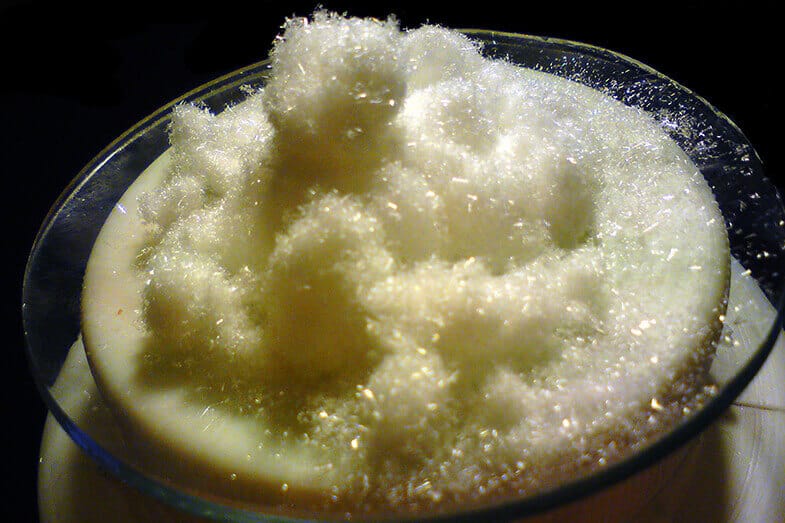If you are the type who diligently reads skin care product labels before buying, then you most likely have heard of salicylic acid. Salicylic acid is a common ingredient in many skin care products. In this article, I’ll address what it is, its benefits, and also how long does salicylic acid take to absorb in the skin?
Salicylic acid takes about 5 minutes to fully absorb in the skin. It is oil-soluble, which means it penetrates deeper and faster into the pores of the skin than water-soluble ingredients. Salicylic acid offers very quick results as it dries out pimples and other inflammation quickly.
You can see improvements in no more than a few hours if you are using salicylic acid primarily for treating acne. Some experts even believe that you could potentially see improvements overnight!
To see the full effects on your skin over time, you will want to use salicylic acid every day or every other day consistently for about 12 weeks.
Read on to learn more about how long salicylic acid takes to absorb as well as answers to many other questions such as:
- What is salicylic acid and how does it work?
- Who should use salicylic acid and for how often?
- How is salicylic acid used or applied?
- What are the benefits of salicylic acid?
- What are the possible side effects?
Also, for an excellent retinol moisturizer, take a look at our top pick, the StriVectin Advanced Retinol Day Moisturizer SPF 30:
Click here to see it on Amazon.
How Long Does Salicylic Acid Take to Absorb?
So, how long does salicylic acid take to absorb? As mentioned earlier, salicylic acid takes only a few minutes to absorb into your skin. It is oil-soluble, which means it can penetrate deeper into your pores in a shorter amount of time.
Salicylic acid offers very quick results as it dries out pimples and other inflammation quickly.
To learn more about salicylic acid and why it is able to absorb so quickly into the skin, let’s take a look at where it comes from next.
For more on the absorption rates of different skincare products, see our post here.
What Is Salicylic Acid and How Does It Work?

Salicylic acid is a natural hormone produced by plants as a resistance mechanism to pathogenic or environmental stress. It can be derived from willow bushes and trees, so you might have seen the term “willow bark extract” on labels of some cosmetic products.
There are two classes of acids usually incorporated in skin care products – alpha hydroxyl acids (AHAs) and beta hydroxy acid (BHAs). AHAs are water-soluble acids from fruits that help peel away the skin’s surface to promote more evenly pigmented skin cells to take over. Some examples of AHAs include glycolic and lactic acids.
Skin is noticeably smoother to the touch after using products with AHA. BHAs, on the other hand, are oil-soluble acids that can go deeper into pores to effectively remove dead skin cells and excess sebum.
Both acids are effective for deep exfoliation, and neither type is better than another. They both can decrease inflammation and the appearance of large pores, even out skin tone, remove dead skin cells, unclog pores and improve overall skin tone. It’s just a matter of what your skin issues are and what you need to address them.
Salicylic acid is a specific type of BHA, which makes it perfect for use against acne and sun damage. Being an oil-soluble acid, it is more effective in going deeper into your pores and unclogging the impurities.
A potent dose of salicylic acid in your skin care product dissolves skin debris that can clog pores and acts as an anti-inflammatory agent to smooth out red, inflamed pimples and pustules.
The below video goes into good detail on the specifics of salicylic acid:
Who Should Use It and How Often?
Salicylic acid is recommended for people prone to breakouts. Combination and oily skin types usually benefit the most, but they can also be used in moderation by people with other skin types.
Experts suggest applying salicylic acid twice a day, but the frequency will still vary from product to product. Make sure to read the label fully and check with your dermatologist before starting a skin care regimen with salicylic acid.
Usage of salicylic acid is typically recommended once in the morning and once at night, especially when treating a serious case of breakouts. But care must be taken when using salicylic acid in the mornings as it can also make the skin sensitive to the sun.
If you already have sun-sensitive skin, you can either limit your usage of salicylic acid in the evening or just follow up your morning routine with plenty of sunscreen to protect your skin against UV rays.
How Is It Used or Applied?
There are many uses for salicylic acid, which also corresponds to a few different methods of application. It is paramount to any skin care routine that any product be applied correctly or else it will not work as effectively.
In the case of salicylic acid, when using it in creams or ointments, enough portions must be applied gently on the affected area to ensure proper coverage and absorption.
The same application is done when salicylic acid is in gel form, except the affected area must be treated with a wet pack at least five minutes prior to the application of the salicylic acid gel. Pad versions of this product must be wiped on and left to dry on the affected portion of the skin.
Salicylic acid may also be incorporated in shampoos and soaps. If used as a shampoo, make sure your scalp is wet enough with lukewarm water before application of the product for 2-3 minutes. As a soap, hot water must be used, and a thick lather with a washcloth is most effective. Make sure to rinse off all the product to avoid any residue.
A good moisturizer that includes salicylic acid and is at a great price is StriVectin Advanced Retinol Day Moisturizer SPF 30. It can keep your skin hydrated, and the salicylic acid helps decrease acne ad other inflammation.
Click here to see it on Amazon.
Benefits
The benefits of salicylic acid are as follows:
1. Acne treatment – first and foremost, salicylic acid is best used for treating acne due to it being oil soluble. BHA penetrates better into pores dissolving impurities and removes dead skin cells from the outermost skin layer. New studies have also found that cleansers with salicylic acid significantly reduce acne abrasions.
2. Treats hyperpigmentation – BHA has been found to have lightening capabilities that are suitable for both dark and light skin tones. Studies have also found that salicylic acid peels were an effective treatment for melasma and post-inflammatory hyperpigmentation.
3. Stimulates the production of collagen – salicylic acid promotes healthier production of collagen, which helps in keeping our skin less saggy, plumper, and with lesser wrinkles and fine lines. Regular use will also help in brightening the complexion by reducing the thickness of dead skin cells, giving a more radiant look.
4. Reduces pore size – the ability of salicylic acid to exfoliate the skin deeply helps in unclogging large pores that result from excess oil and debris. Pores will get the chance to reduce in size once the build-up of oils and dirt have been taken away by salicylic acid.
Side Effects
Obviously, you cannot have too much of a good thing. The use of salicylic acid in high doses can make your skin susceptible to irritation and redness. It must be noted, however, that the percentage of salicylic acid in products available in the market without prescription is tolerated very well by most people.
And salicylic acid is most commonly used as just a small portion of a larger formula. There are other ingredients that are incorporated into a skincare product that must be taken into consideration.
BHAs can also cause dry skin and can be quite irritating if used incorrectly. What’s worse, already damaged skin tends to absorb salicylic acid even quicker, which aggravates any existing irritation.
Researchers have said that BHAs have an underlying pH-related potential to irritate the skin and are only intensified on sensitive skin types.
See the below video for info on how long it takes for other skincare products to absorb:
Conclusion – How Long Does Salicylic Acid Take to Absorb?
So, how long does salicylic acid take to absorb? Salicylic acid absorbs in only about 5 minutes. It works fast at delivering results because it penetrates deep within the pores fast. It can even present some overnight results, especially when it comes to lightening pimple marks.
But there are a lot more benefits to using salicylic acid, and if you are looking for a complete makeover of your skin, you would have to use the product regularly for about 12 weeks.
Knowing the timeline and absorption rate of each skin care product in your routine is advantageous, especially when you are just starting out in your skin care journey. Not knowing can lead you to possibly overusing the product or even mixing it with other products not compatible with it for your skin type.
There are a lot of uses of salicylic acid, and the timeline for its efficiency also varies depending on a person’s skin type and condition, as well as the particular issues that need to be addressed.
The golden rule when it comes to chemical-based skin care products is to never go hard with it on the first application. Try to ease it in your skin care routine about once or twice a week at first or until your skin has the time to get accustomed to the new product.
Be sure to always discuss with your dermatologist before diving into any new product with salicylic acid. That way, you can reap the benefits while minimizing further damage to your skin.
Related reading:
How Long Does It Take for Ceramides to Work?
How Long Does It Take for Retinol to Work?
Retin-A vs Benzoyl Peroxide vs Salicylic Acid for Body Acne







